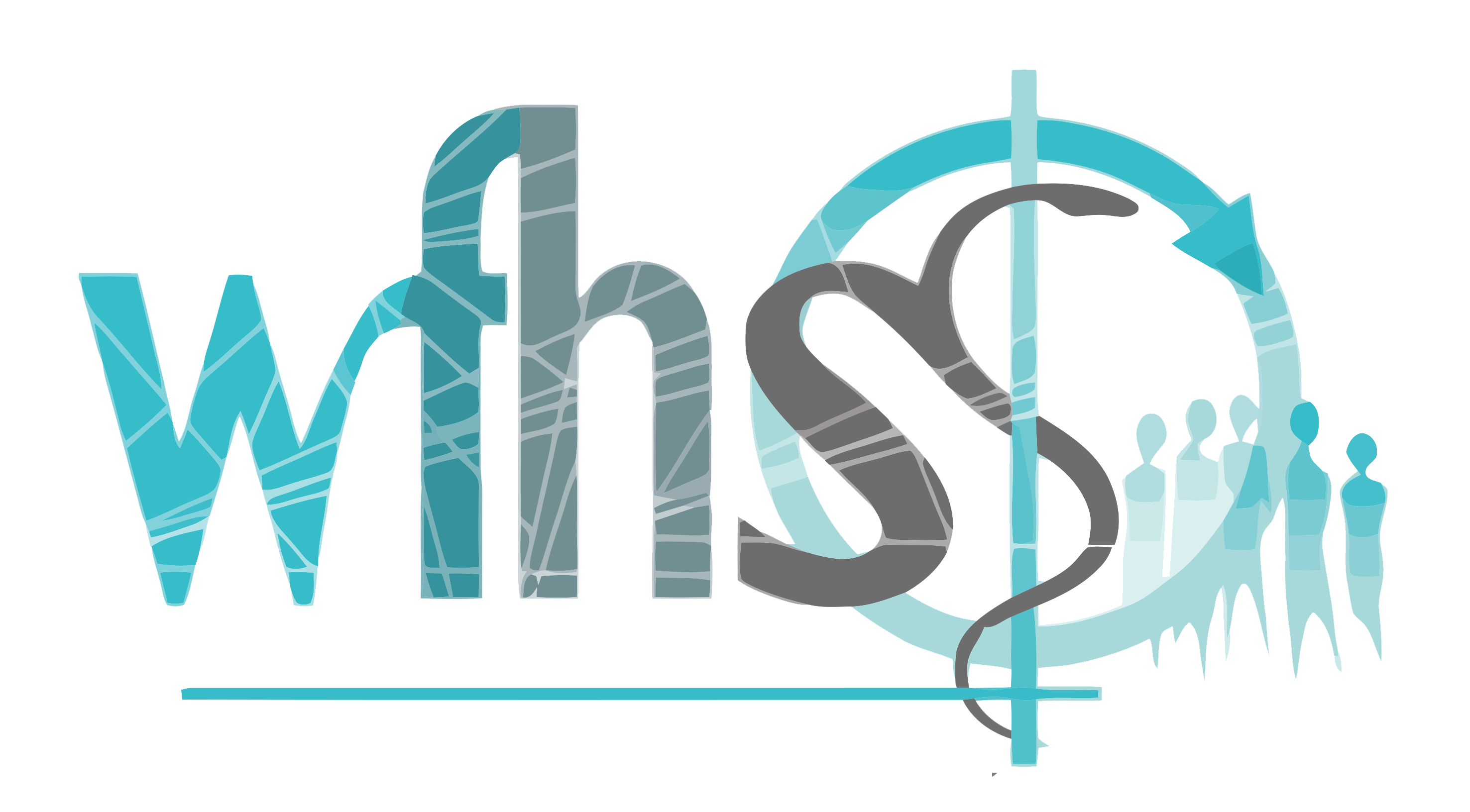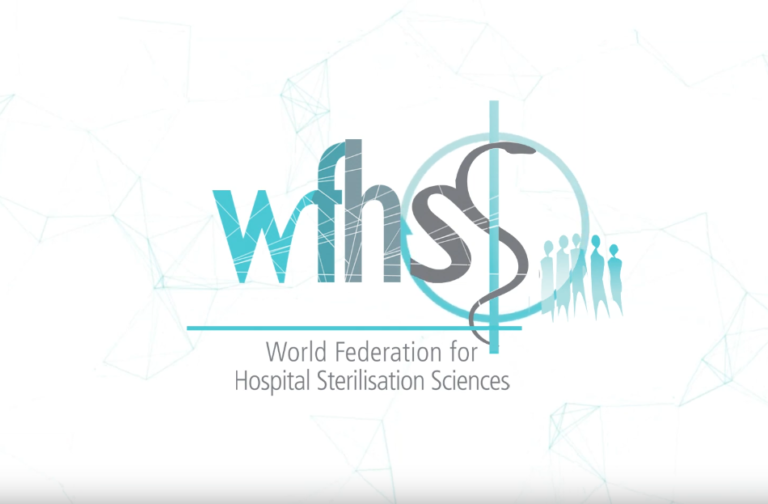![]() Good practices for the sterilisation of medical devices – 2017 – Superior Health Council
Good practices for the sterilisation of medical devices – 2017 – Superior Health Council
![]() Good practices voor sterilisatie van medishe hulpmiddelen – Herziening van de aanbevelingen voor sterilisatie – 2017 – Hoge Gezondheidsraad
Good practices voor sterilisatie van medishe hulpmiddelen – Herziening van de aanbevelingen voor sterilisatie – 2017 – Hoge Gezondheidsraad
![]() Bonnes pratiques en matière de stérilisation des dispositifs médicaux – 2018 – Conseil Supérieur de la Santé
Bonnes pratiques en matière de stérilisation des dispositifs médicaux – 2018 – Conseil Supérieur de la Santé
![]() Hygiene Requirements for the Reprocessing of Medical Devices – RKI — 2012 – BfArM
Hygiene Requirements for the Reprocessing of Medical Devices – RKI — 2012 – BfArM
![]() Validation and routine monitoring of automated cleaning and thermal disinfection processes for medical devices – 2017 – DGKH – DGSV – AKI
Validation and routine monitoring of automated cleaning and thermal disinfection processes for medical devices – 2017 – DGKH – DGSV – AKI
![]() Recommendations by the Quality Task Group (102) – Low-temperature sterilization processes – 2017 – Central Service
Recommendations by the Quality Task Group (102) – Low-temperature sterilization processes – 2017 – Central Service
![]() Recommendations by the Quality Task Group (98) – Recommendations for validation preparation of steam sterilization processes in large sterilizers – 2016 – Central Service
Recommendations by the Quality Task Group (98) – Recommendations for validation preparation of steam sterilization processes in large sterilizers – 2016 – Central Service
![]() Recommendations by the Quality Task Group (99) – Recommendations for validation preparation of steam sterilization processes in large sterilizers – Part 2 – 2016 – Central Service
Recommendations by the Quality Task Group (99) – Recommendations for validation preparation of steam sterilization processes in large sterilizers – Part 2 – 2016 – Central Service
![]() Recommendations by the Quality Task Group (89) – Programme Controls Part 2: Endoscope washer-disinfectors with chemothermal disinfection – 2015 – Central Service
Recommendations by the Quality Task Group (89) – Programme Controls Part 2: Endoscope washer-disinfectors with chemothermal disinfection – 2015 – Central Service
![]() Guideline for the validation of packaging processes according to ISO 11607-2 — 2012 – Central Service – DGSV
Guideline for the validation of packaging processes according to ISO 11607-2 — 2012 – Central Service – DGSV
![]() Guidelines for validation of manual cleaning and manual chemical disinfection of medical devices – 2013 – DGSV – DGHK – AKI – VAH
Guidelines for validation of manual cleaning and manual chemical disinfection of medical devices – 2013 – DGSV – DGHK – AKI – VAH
![]() Bonnes pratiques de retraitement des dispositifs médicaux – 2016 – SSSH – SSHH – Swissmedic
Bonnes pratiques de retraitement des dispositifs médicaux – 2016 – SSSH – SSHH – Swissmedic
![]() Guide suisse de validation et de contrôle de routine des procédés de lavage et de désinfection des Dispositifs médicaux – Partie 1 – généralités – 2019 – SGSV – SSHH – IG-WiG – Swissmedic
Guide suisse de validation et de contrôle de routine des procédés de lavage et de désinfection des Dispositifs médicaux – Partie 1 – généralités – 2019 – SGSV – SSHH – IG-WiG – Swissmedic
![]() Guide suisse de validation et de contrôle de routine des procédés de lavage et de désinfection des Dispositifs médicaux – Partie 2 – Procédé de nettoyage mécanique et de désinfection thermique – LD pour instruments chirurgicaux, matériel d’anethsésie, bacs, plats, récipients, ustensiles, verrerie, etc, – 2019 – SGSV – SSHH – IG-WiG – Swissmedic
Guide suisse de validation et de contrôle de routine des procédés de lavage et de désinfection des Dispositifs médicaux – Partie 2 – Procédé de nettoyage mécanique et de désinfection thermique – LD pour instruments chirurgicaux, matériel d’anethsésie, bacs, plats, récipients, ustensiles, verrerie, etc, – 2019 – SGSV – SSHH – IG-WiG – Swissmedic
![]() Bonnes pratiques de retraitement des dispositifs médicaux pour les cabinets médicaux et les cabinets dentaires ainsi que d’autres utilisateurs de petits stérilisateurs à la vapeur d’eau saturée – 2010 – Swissmedic
Bonnes pratiques de retraitement des dispositifs médicaux pour les cabinets médicaux et les cabinets dentaires ainsi que d’autres utilisateurs de petits stérilisateurs à la vapeur d’eau saturée – 2010 – Swissmedic
![]() Buone pratiche di ricondizionamento di dispositivi medici – 2016 – SSSH – SSHH – Swissmedic
Buone pratiche di ricondizionamento di dispositivi medici – 2016 – SSSH – SSHH – Swissmedic
![]() Schweizerische Leitlinie für die Validierung und Routineüberwachung von Reinigungs- und Desinfektionsprozessen für Medizinprodukte – 2017 – SSSH – SSHH – Swissmedic
Schweizerische Leitlinie für die Validierung und Routineüberwachung von Reinigungs- und Desinfektionsprozessen für Medizinprodukte – 2017 – SSSH – SSHH – Swissmedic
![]() Health Technical Memorandum 01-01: Management and decontamination of surgical instruments (medical devices) used in acute care – Part A: Management and provision – 2016 – Department of Health
Health Technical Memorandum 01-01: Management and decontamination of surgical instruments (medical devices) used in acute care – Part A: Management and provision – 2016 – Department of Health
![]() Health Technical Memorandum 01-01: Management and decontamination of surgical instruments (medical devices) used in acute care – Part A: Common elements – 2016 – Department of Health
Health Technical Memorandum 01-01: Management and decontamination of surgical instruments (medical devices) used in acute care – Part A: Common elements – 2016 – Department of Health
![]() Health Technical Memorandum 01-01: Management and decontamination of surgical instruments (medical devices) used in acute care – Part D: Washer-disinfector – Part A: Common elements – 2016 – Department of Health
Health Technical Memorandum 01-01: Management and decontamination of surgical instruments (medical devices) used in acute care – Part D: Washer-disinfector – Part A: Common elements – 2016 – Department of Health
![]() Health Technical Memorandum 01-01: Management and decontamination of surgical instruments (medical devices) used in acute care – Part E: Alternatives to steam for the sterilization of reusable medical devices – Part A: Common elements – 2016 – Department of Health
Health Technical Memorandum 01-01: Management and decontamination of surgical instruments (medical devices) used in acute care – Part E: Alternatives to steam for the sterilization of reusable medical devices – Part A: Common elements – 2016 – Department of Health
![]() Reprocessing Medical Devices in Health Care Settings: validation, methods and labeling – Guidance for industry and Food and Drug Administration staff – 2015 – Food and Drug Administration
Reprocessing Medical Devices in Health Care Settings: validation, methods and labeling – Guidance for industry and Food and Drug Administration staff – 2015 – Food and Drug Administration
![]() High-Level Disinfection (HLD) and sterilization BoosterPak – 2016 – The Joint Commission
High-Level Disinfection (HLD) and sterilization BoosterPak – 2016 – The Joint Commission
![]() Multisociety guideline on reprocessing flexible GI endoscopes – 2016 – SGNA – APIC – SHEA – AASLD – ASGE – ACG – AGA – ASCRS
Multisociety guideline on reprocessing flexible GI endoscopes – 2016 – SGNA – APIC – SHEA – AASLD – ASGE – ACG – AGA – ASCRS
![]() Guidelines for disinfection and sterilization in Healthcare facilities – 2019 – CDC
Guidelines for disinfection and sterilization in Healthcare facilities – 2019 – CDC
![]() AAMI Standards and Technical Information Reports – Association for the Advancement of Medical Instrumentation
AAMI Standards and Technical Information Reports – Association for the Advancement of Medical Instrumentation
![]() Cleaning, disinfecting and sterilizing reusable medical and surgical instruments and equipment, and maintenance of associated environments in health care facilities – 2003 – Standard Australia
Cleaning, disinfecting and sterilizing reusable medical and surgical instruments and equipment, and maintenance of associated environments in health care facilities – 2003 – Standard Australia
![]() Guidelines for the evaluation of sterilants and disinfectants – Therapeutic Goods Administration – TGA – 1998 – Therapeutic Goods Administration – TGA
Guidelines for the evaluation of sterilants and disinfectants – Therapeutic Goods Administration – TGA – 1998 – Therapeutic Goods Administration – TGA
![]() Hygiene Requirements for the Reprocessing of Medical Devices – RKI — 2012 – BfArM
Hygiene Requirements for the Reprocessing of Medical Devices – RKI — 2012 – BfArM
![]() Validation and routine monitoring of automated cleaning and thermal disinfection processes for medical devices – 2017 – DGKH – DGSV – AKI
Validation and routine monitoring of automated cleaning and thermal disinfection processes for medical devices – 2017 – DGKH – DGSV – AKI
![]() Recommendations by the Quality Task Group (102) – Low-temperature sterilization processes – 2017 – Central Service
Recommendations by the Quality Task Group (102) – Low-temperature sterilization processes – 2017 – Central Service
![]() Recommendations by the Quality Task Group (98) – Recommendations for validation preparation of steam sterilization processes in large sterilizers – 2016 – Central Service
Recommendations by the Quality Task Group (98) – Recommendations for validation preparation of steam sterilization processes in large sterilizers – 2016 – Central Service
![]() Recommendations by the Quality Task Group (99) – Recommendations for validation preparation of steam sterilization processes in large sterilizers – Part 2 – 2016 – Central Service
Recommendations by the Quality Task Group (99) – Recommendations for validation preparation of steam sterilization processes in large sterilizers – Part 2 – 2016 – Central Service
![]() Recommendations by the Quality Task Group (89) – Programme Controls Part 2: Endoscope washer-disinfectors with chemothermal disinfection – 2015 – Central Service
Recommendations by the Quality Task Group (89) – Programme Controls Part 2: Endoscope washer-disinfectors with chemothermal disinfection – 2015 – Central Service
![]() Guideline for the validation of packaging processes according to ISO 11607-2 — 2012 – Central Service – DGSV
Guideline for the validation of packaging processes according to ISO 11607-2 — 2012 – Central Service – DGSV
![]() Guidelines for validation of manual cleaning and manual chemical disinfection of medical devices – 2013 – DGSV – DGHK – AKI – VAH
Guidelines for validation of manual cleaning and manual chemical disinfection of medical devices – 2013 – DGSV – DGHK – AKI – VAH
![]() Good practices for the sterilisation of medical devices – 2017 – Superior Health Council
Good practices for the sterilisation of medical devices – 2017 – Superior Health Council
![]() Good practices voor sterilisatie van medishe hulpmiddelen – Herziening van de aanbevelingen voor sterilisatie – 2017 – Hoge Gezondheidsraad
Good practices voor sterilisatie van medishe hulpmiddelen – Herziening van de aanbevelingen voor sterilisatie – 2017 – Hoge Gezondheidsraad
![]() Bonnes pratiques en matière de stérilisation des dispositifs médicaux – 2018 – Conseil Supérieur de la Santé
Bonnes pratiques en matière de stérilisation des dispositifs médicaux – 2018 – Conseil Supérieur de la Santé
![]() Guidance Document: Information to Be Provided by Manufacturers for the Reprocessing and Sterilization of Reusable Medical Devices – 2011 – Health Canada
Guidance Document: Information to Be Provided by Manufacturers for the Reprocessing and Sterilization of Reusable Medical Devices – 2011 – Health Canada
![]() Guidance document – Safety and Effectiveness Requirements for High-Level Disinfectants and Sterilants for use on Reusable Semi-Critical and Critical Medical Devices (2018) – 2018 – Health Canada
Guidance document – Safety and Effectiveness Requirements for High-Level Disinfectants and Sterilants for use on Reusable Semi-Critical and Critical Medical Devices (2018) – 2018 – Health Canada
![]() Retraitement des dispositifs médicaux critiques – 2014 – Institut National de Santé Publique du Québec
Retraitement des dispositifs médicaux critiques – 2014 – Institut National de Santé Publique du Québec
![]() Bonnes pratiques de retraitement des dispositifs médicaux – 2016 – SSSH – SSHH – Swissmedic
Bonnes pratiques de retraitement des dispositifs médicaux – 2016 – SSSH – SSHH – Swissmedic
![]() Guide suisse de validation et de contrôle de routine des procédés de lavage et de désinfection des Dispositifs médicaux – Partie 1 – généralités – 2019 – SGSV – SSHH – IG-WiG – Swissmedic
Guide suisse de validation et de contrôle de routine des procédés de lavage et de désinfection des Dispositifs médicaux – Partie 1 – généralités – 2019 – SGSV – SSHH – IG-WiG – Swissmedic
![]() Guide suisse de validation et de contrôle de routine des procédés de lavage et de désinfection des Dispositifs médicaux – Partie 2 – Procédé de nettoyage mécanique et de désinfection thermique – LD pour instruments chirurgicaux, matériel d’anethsésie, bacs, plats, récipients, ustensiles, verrerie, etc, – 2019 – SGSV – SSHH – IG-WiG – Swissmedic
Guide suisse de validation et de contrôle de routine des procédés de lavage et de désinfection des Dispositifs médicaux – Partie 2 – Procédé de nettoyage mécanique et de désinfection thermique – LD pour instruments chirurgicaux, matériel d’anethsésie, bacs, plats, récipients, ustensiles, verrerie, etc, – 2019 – SGSV – SSHH – IG-WiG – Swissmedic
![]() Bonnes pratiques de retraitement des dispositifs médicaux pour les cabinets médicaux et les cabinets dentaires ainsi que d’autres utilisateurs de petits stérilisateurs à la vapeur d’eau saturée – 2010 – Swissmedic
Bonnes pratiques de retraitement des dispositifs médicaux pour les cabinets médicaux et les cabinets dentaires ainsi que d’autres utilisateurs de petits stérilisateurs à la vapeur d’eau saturée – 2010 – Swissmedic
![]() Buone pratiche di ricondizionamento di dispositivi medici – 2016 – SSSH – SSHH – Swissmedic
Buone pratiche di ricondizionamento di dispositivi medici – 2016 – SSSH – SSHH – Swissmedic
![]() Schweizerische Leitlinie für die Validierung und Routineüberwachung von Reinigungs- und Desinfektionsprozessen für Medizinprodukte – 2017 – SSSH – SSHH – Swissmedic
Schweizerische Leitlinie für die Validierung und Routineüberwachung von Reinigungs- und Desinfektionsprozessen für Medizinprodukte – 2017 – SSSH – SSHH – Swissmedic
![]() Reprocessing Medical Devices in Health Care Settings: validation, methods and labeling – Guidance for industry and Food and Drug Administration staff – 2015 – Food and Drug Administration
Reprocessing Medical Devices in Health Care Settings: validation, methods and labeling – Guidance for industry and Food and Drug Administration staff – 2015 – Food and Drug Administration
![]() High-Level Disinfection (HLD) and sterilization BoosterPak – 2016 – The Joint Commission
High-Level Disinfection (HLD) and sterilization BoosterPak – 2016 – The Joint Commission
![]() AST Standards of Practice for Packaging Material and Preparing Items for Sterilization – 2009 – Association of Surgical Technologies
AST Standards of Practice for Packaging Material and Preparing Items for Sterilization – 2009 – Association of Surgical Technologies
![]() Multisociety guideline on reprocessing flexible GI endoscopes – 2016 – SGNA – APIC – SHEA – AASLD – ASGE – ACG – AGA – ASCRS
Multisociety guideline on reprocessing flexible GI endoscopes – 2016 – SGNA – APIC – SHEA – AASLD – ASGE – ACG – AGA – ASCRS
![]() Guidelines for disinfection and Syerilization in Healthcare facilities – 2019 – CDC
Guidelines for disinfection and Syerilization in Healthcare facilities – 2019 – CDC
![]() AAMI Standards and Technical Information Reports – Association for the Advancement of Medical Instrumentation
AAMI Standards and Technical Information Reports – Association for the Advancement of Medical Instrumentation
![]() Health Technical Memorandum 01-01: Management and decontamination of surgical instruments (medical devices) used in acute care – Part A: Management and provision – 2016 – Department of Health
Health Technical Memorandum 01-01: Management and decontamination of surgical instruments (medical devices) used in acute care – Part A: Management and provision – 2016 – Department of Health
![]() Health Technical Memorandum 01-01: Management and decontamination of surgical instruments (medical devices) used in acute care – Part A: Common elements – 2016 – Department of Health
Health Technical Memorandum 01-01: Management and decontamination of surgical instruments (medical devices) used in acute care – Part A: Common elements – 2016 – Department of Health
![]() Health Technical Memorandum 01-01: Management and decontamination of surgical instruments (medical devices) used in acute care – Part D: Washer-disinfector – Part A: Common elements – 2016 – Department of Health
Health Technical Memorandum 01-01: Management and decontamination of surgical instruments (medical devices) used in acute care – Part D: Washer-disinfector – Part A: Common elements – 2016 – Department of Health
![]() Health Technical Memorandum 01-01: Management and decontamination of surgical instruments (medical devices) used in acute care – Part E: Alternatives to steam for the sterilization of reusable medical devices – Part A: Common elements – 2016 – Department of Health
Health Technical Memorandum 01-01: Management and decontamination of surgical instruments (medical devices) used in acute care – Part E: Alternatives to steam for the sterilization of reusable medical devices – Part A: Common elements – 2016 – Department of Health











